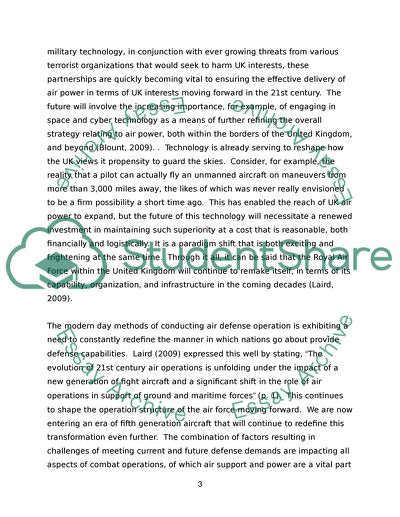Cite this document
(“Given likely changes to the operating environment, analyse how UK air Essay”, n.d.)
Retrieved from https://studentshare.org/miscellaneous/1676003-given-likely-changes-to-the-operating-environment-analyse-how-uk-air-power-might-be-most-effectively-employed-over-the-next-10-years
Retrieved from https://studentshare.org/miscellaneous/1676003-given-likely-changes-to-the-operating-environment-analyse-how-uk-air-power-might-be-most-effectively-employed-over-the-next-10-years
(Given Likely Changes to the Operating Environment, Analyse How UK Air Essay)
https://studentshare.org/miscellaneous/1676003-given-likely-changes-to-the-operating-environment-analyse-how-uk-air-power-might-be-most-effectively-employed-over-the-next-10-years.
https://studentshare.org/miscellaneous/1676003-given-likely-changes-to-the-operating-environment-analyse-how-uk-air-power-might-be-most-effectively-employed-over-the-next-10-years.
“Given Likely Changes to the Operating Environment, Analyse How UK Air Essay”, n.d. https://studentshare.org/miscellaneous/1676003-given-likely-changes-to-the-operating-environment-analyse-how-uk-air-power-might-be-most-effectively-employed-over-the-next-10-years.


